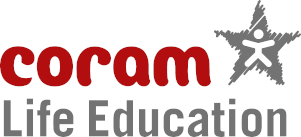Teaching and learning through rights
RRSA Outcome 2: In school children and young people enjoy the rights enshrined in the United Nations Convention on the Rights of the Child.*
SCARF lessons support this outcome by providing:
- Teaching and learning strategies and guidance for teachers about creating a safe, inclusive environment and by ensuring that this is reflected in the wording within lesson plans;
- Teaching and learning training films promoting the importance of inclusivity and engagement of all children are available to all SCARF schools;
- Lessons that provide a wealth of opportunities for children to discuss and practice the skills, values, attitudes and related behaviours relating to rights, including fairness and equality.
RRSA Outcome 3: Relationships are positive and founded on dignity and a mutual respect for rights.
SCARF lessons are carefully designed and sequenced to meet children’s developmental levels and related understanding of respectful, caring relationships – how these are created and maintained.
These values are threaded throughout the SCARF curriculum.
Specific lessons support children in developing critical thinking skills, and opportunities for them to clarify their values and develop attitudes that help them to make decisions and behave appropriately in relation to rights and the concepts behind them.
RRSA Outcome 4: Children and young people are safe and protected and know what to do if they need support.
The letter S in SCARF is for Safety and Safety is at the heart of SCARF lessons; these provide children with many opportunities to develop the emotional literacy competencies and skills that will support them in identifying feelings, recognising ‘not so good’ feelings and how they can get support if they have such feelings.
Children also learn to understand the impact of people’s behavior – positive and negative – on themselves and others. This includes bullying behaviour. SCARF provides a series of lessons that tackle this specific issue and children learn not only about how to help themselves if faced with bullying behaviours, but also the positive impact they can have in the role of an active bystander in bullying situations.
RRSA Outcome 5: Children’s social and emotional wellbeing is a priority. They learn to develop healthy lifestyles.
The SCARF curriculum prioritises children's social and emotional learning, providing regular opportunities for them to develop and practise critical thinking skills that help to inform their choices about physical and emotional health and wellbeing.
RRSA Outcome 6: Children and young people are included and are valued as individuals.
The SCARF curriculum celebrates the uniqueness of each person. Specific lessons focus on how children and young people can develop and appreciate their skills.
A focus on developing a growth mindset further promotes and embeds this approach. Search growth mindset on our Subjects and Issues page to see the lessons that specifically support this.
RRSA Outcome 7: Children and young people value education and are involved in making decisions about their learning.
The Pupil Voice page at 1.3 of the Preparation and Planning section of the Whole-school SCARF toolkit provides resources to help teachers give children opportunities to be involved in decisions about their learning. Strategies, such as anonymous question boxes, provide further opportunities for pupil voices to be heard.
* Source: UNICEF - RRSA outcomes at silver and gold

